With Christmas around the corner, the stoves are burning and our tummies work in overdrive trying to digest all the scrumptious season goodies on offer! But while waiting for those gingerbread men in the oven, why not dig into another ancient kitchen craft that won’t only do well with your Christmas menu, but help your tummy with some serious first-aid!
Alexandra Fancher lets you in on the art of fermenting food!
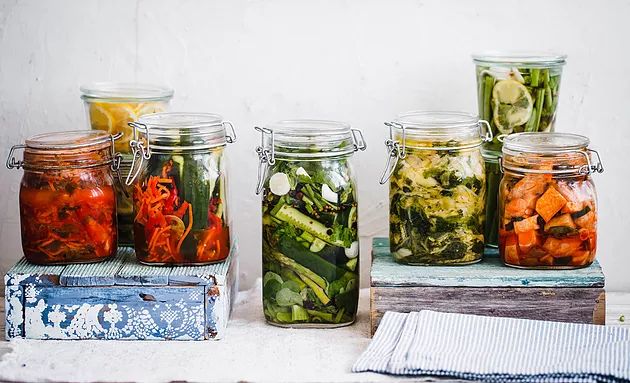
Fermentation makes foods more nutritious, as well as delicious. Microscopic organisms – the good gut bacteria, transform food and extend its usefulness. Fermentation is found throughout many human cultures and is the best source of natural prebiotics and probiotics. These are known to help people stay healthy, by boosting the immune system and keeping the GUT healthy.
If you have a sluggish digestive system, are experiencing bloating, constipation, tiredness, dull skin and hair, acne, eczema, mood disorders (moody, depressed, irritable) and a weak immune system then you should learn all about the ancient yet brilliant fermentation process of different foods.
When a food is fermented, it means that it’s left to sit and steep until the sugars and carbs that the food naturally contains interact with bacteria, yeast and microbes to change the chemical structure of the food. The fermentation of foods such as milk and vegetables is also a great way to preserve them for a longer period of time and make their nutrients more bioavailable (absorbable).
Here is a list of the 8 healthiest fermented foods to add to your diet:
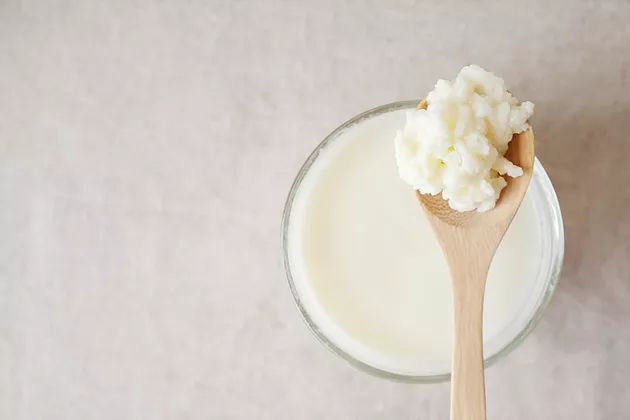
1. Kefir
Kefir is a fermented milk product (made from cow, goat or sheep’s milk) that tastes like a drinkable yogurt. Its benefits include providing high levels of vitamin B12, calcium, magnesium, vitamin K2, biotin, folate, enzymes and probiotics.
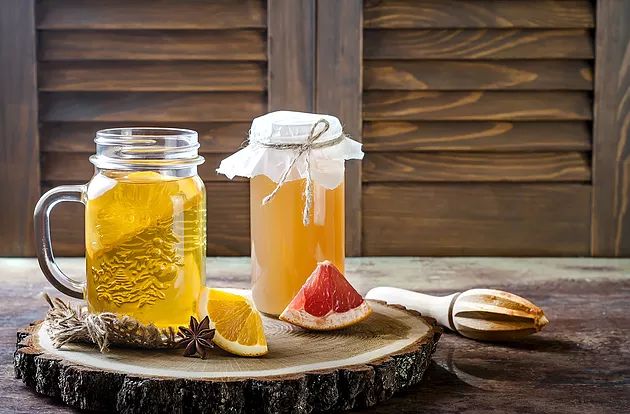
2. Kombucha
Kombucha is a fermented beverage made of black or green organic tea and organic sugar (from various sources like cane sugar, fruit or honey). It contains a colony of bacteria and yeast that is responsible for initiating the fermentation process once combined with sugar. Do fermented foods like kombucha contain alcohol? Kombucha has trace amounts of alcohol but too little to cause intoxication or even to be noticeable. Other fermented foods, such as yogurt or fermented veggies, typically do not have any alcohol.

3. Sauerkraut
One of the oldest traditional foods, with very long roots in German, Russian and Chinese cuisine, for example. Sauerkraut means “sour cabbage” in German, although the Germans weren’t actually the first to make sauerkraut (it’s believed the Chinese were). Made from fermented green or red cabbage, sauerkraut is high in dietary fiber, Vitamin A, vitamin C, vitamin K and B vitamins. It’s also a great source of iron, copper, calcium, sodium, and magnesium.
Is store-bought sauerkraut fermented? Not always, especially the canned/processed kind. Real, traditional, fermented sauerkraut needs to be refrigerated, is usually stored in glass jars and will say that it is fermented on the package/label.
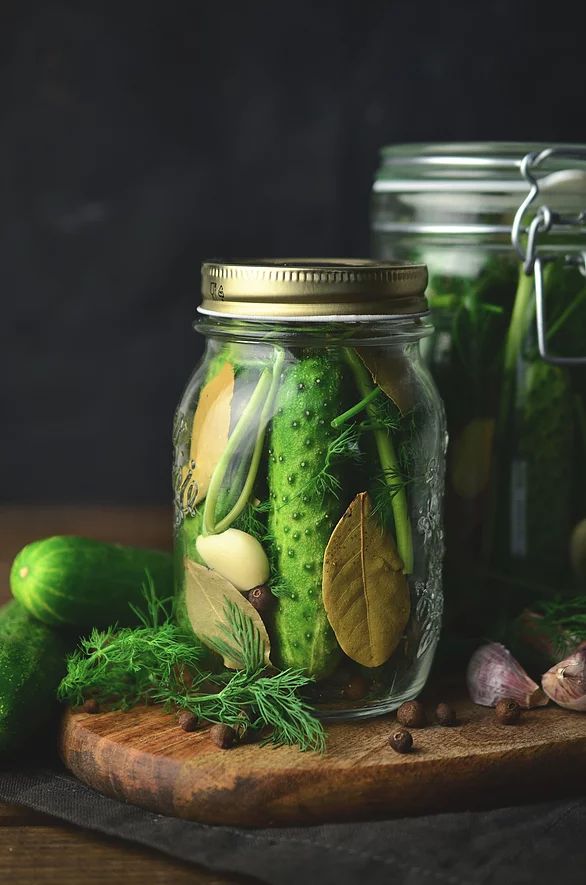
4. Pickles
Didn’t think that pickles had probiotics? Fermented pickles contain a ton vitamins and minerals, plus antioxidants and gut-friendly probiotic bacteria.
Are store-bought pickles fermented? Not usually. Most store-bought pickles are made with vinegar and cucumbers, and although this makes the pickles taste sour, this doesn’t lead to natural fermentation. Fermented pickles should be made with cucumbers and brine (salt + water). RAW.
What is the best brand of pickles if you want probiotics? When choosing a jar of pickles, look for “lactic acid fermented pickles” made by a manufacturer that uses organic products and brine, refrigerates the pickles, and states that the pickles have been fermented. If you can find a local maker, such as at a farmers market, you’ll get some of the best probiotics for your health.
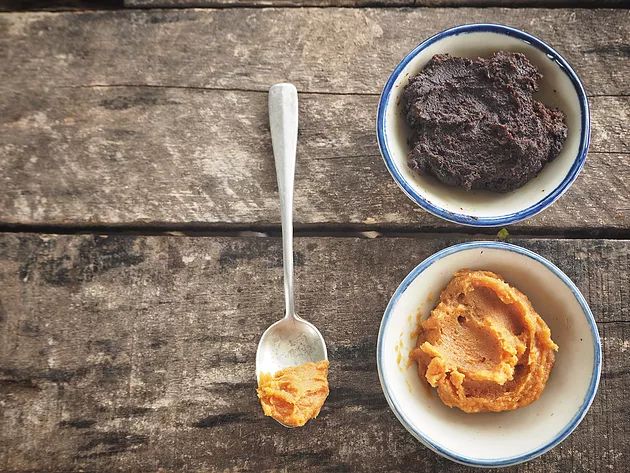
5. Miso
Miso is created by fermenting soybeans, barley or brown rice with koji, a type of fungus. It’s a traditional Japanese ingredient in recipes including miso soup.
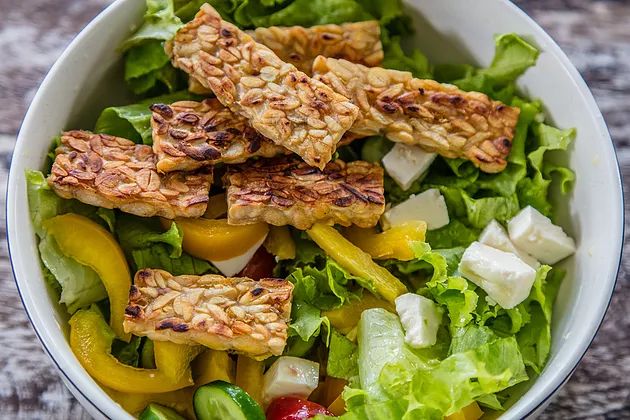
6. Tempeh
Another beneficial fermented food made with soybeans is tempeh, a product that is created by combining soybeans with a tempeh starter (which is a mix of live mold). When it sits for a day or two, it becomes a dense, cake-like product that contains both probiotics and a hefty dose of protein too. Tempeh is similar to tofu but not as spongy and more “grainy.”

7. Natto
Natto is a popular food in Japan consisting of fermented soybeans. It is sometimes even eaten for breakfast in Japan and commonly combined with soy sauce, karashi mustard and Japanese bunching onion. After fermentation it develops a strong smell, deep flavor and sticky, slimy texture that not everyone who is new to natto appreciates.
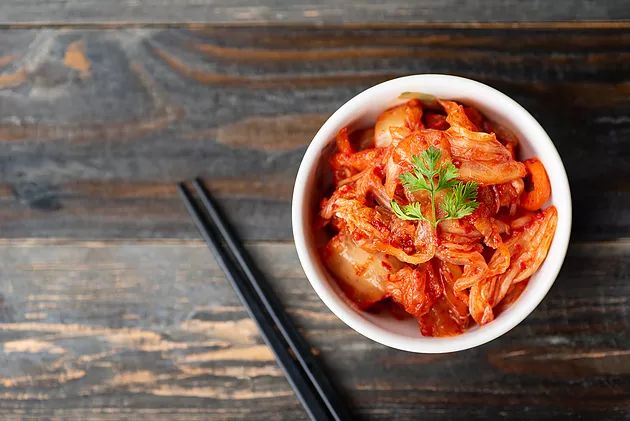
8. Kimchi
Kimchi is a traditional fermented Korean dish that is made from vegetables, including cabbage, plus spices like ginger, garlic and pepper, and other seasoning. It’s often added to Korean recipes like rice bowls, ramen or bibimbap.
The best way to add fermented foods to your diet, is to have 1-2 servings per day with lunch and dinner! Try them all out and find your favourites, once you are set rotate them to get the optimal mix of probiotics and the benefits of each fermented food.
Home made Milk Kefir
by Karin G. Reiter
Ingredients:
1 Glass jar with a good lid- sterilized with boiling water
1 tbsp of Kefir milk grains
1 cup of full fat milk (organic if possible, not UHT)- also good with Goats milk
Strainer (needs to be made form plastic not metal)
1 wooden spoon (not from metal)
To make:
- Soak the kefir grains in the milk. Leave on the kitchen counter (in a warm place not with direct sun light) for 12 H.
- After 12 H- 24H (depending on how sour you like the taste), shake the jar a little then strain the grains (we pour the milk + the grains into the strainer over a a clean sterilized glass jar).
- Then take the left over grains and place in a new clean, sterilized jar with new fresh milk. 1tbsp of grains in 1 cup of milk.
- Then place the 12 H kefir which has already a consistency of yogurt in the fridge.
- The longer you leave in the fridge the more sour it will get.
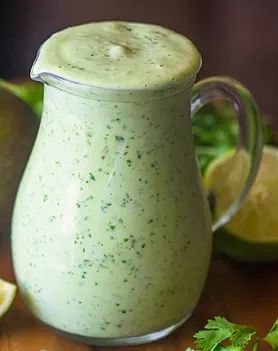
Avocado, Coriander, Lime and Kefir creamy salad dressing
Ingredients:
1 ripe avocado.
1 clove Garlic, peeled.
¼ cup roughly chopped coriander.
¼ cup milk kefir (I am using Goats milk kefir).
1 tablespoon fresh lime or lemon juice
3 tablespoons Olive Oil.
¼ teaspoon Himalayan Rock Salt.
¼ teaspoon Ground Black Pepper.
To Make:
Blend in the blender and dress a green leafy salad of choice.
Make sure you also read How Do Probiotics Really Help?




